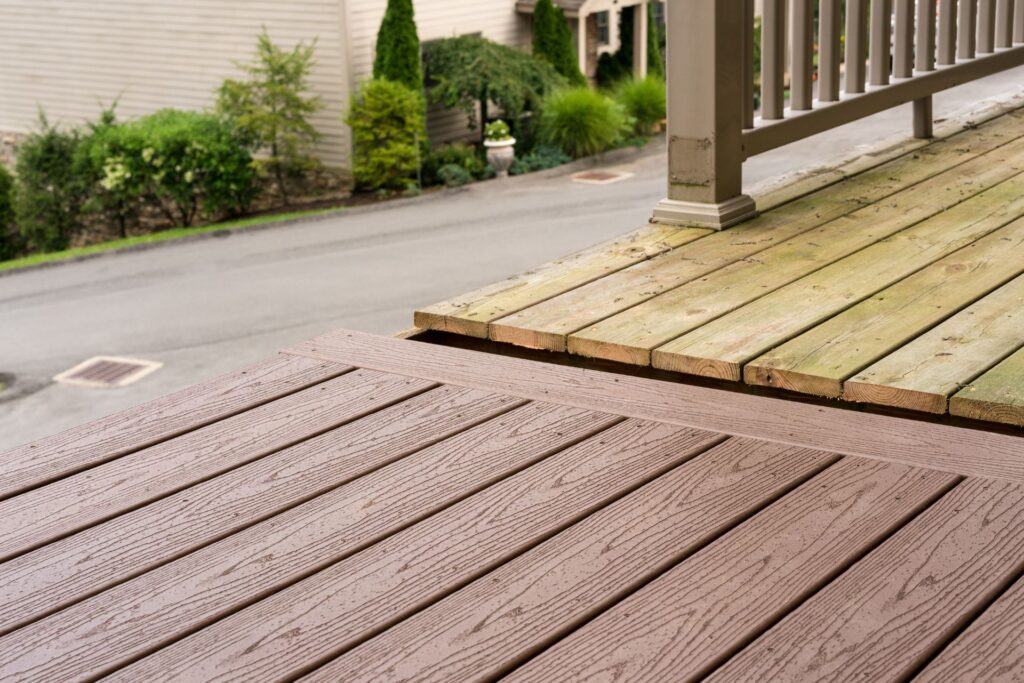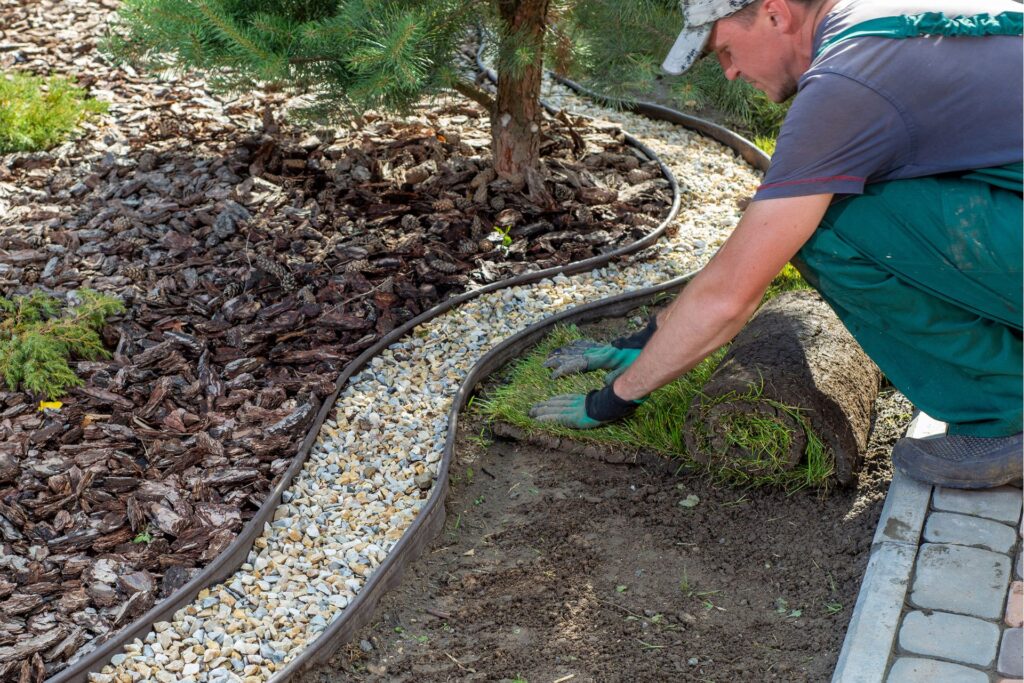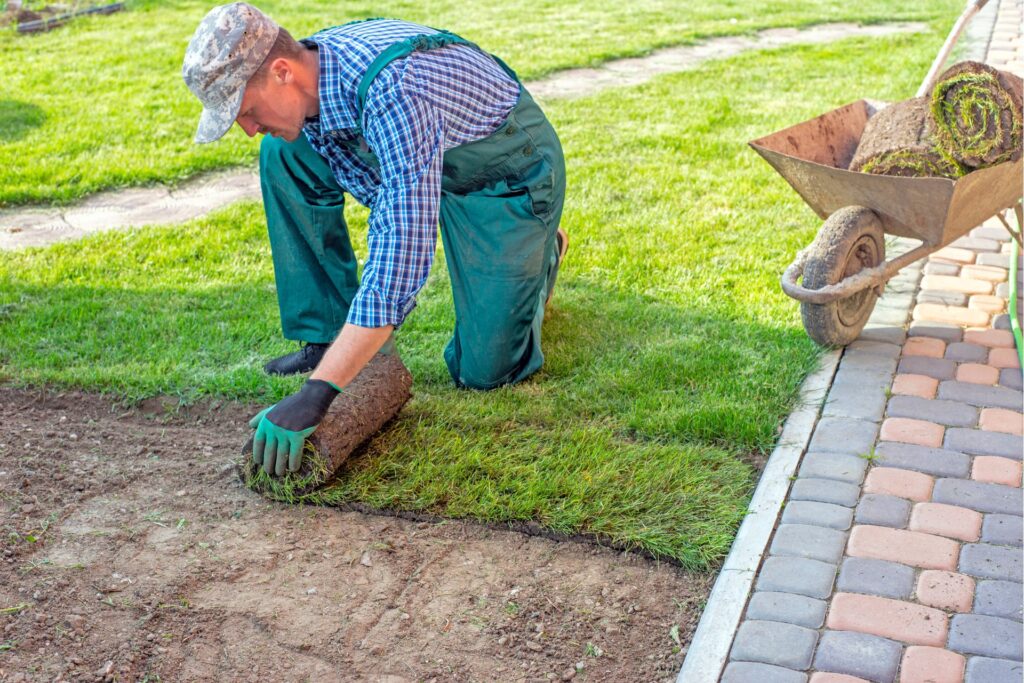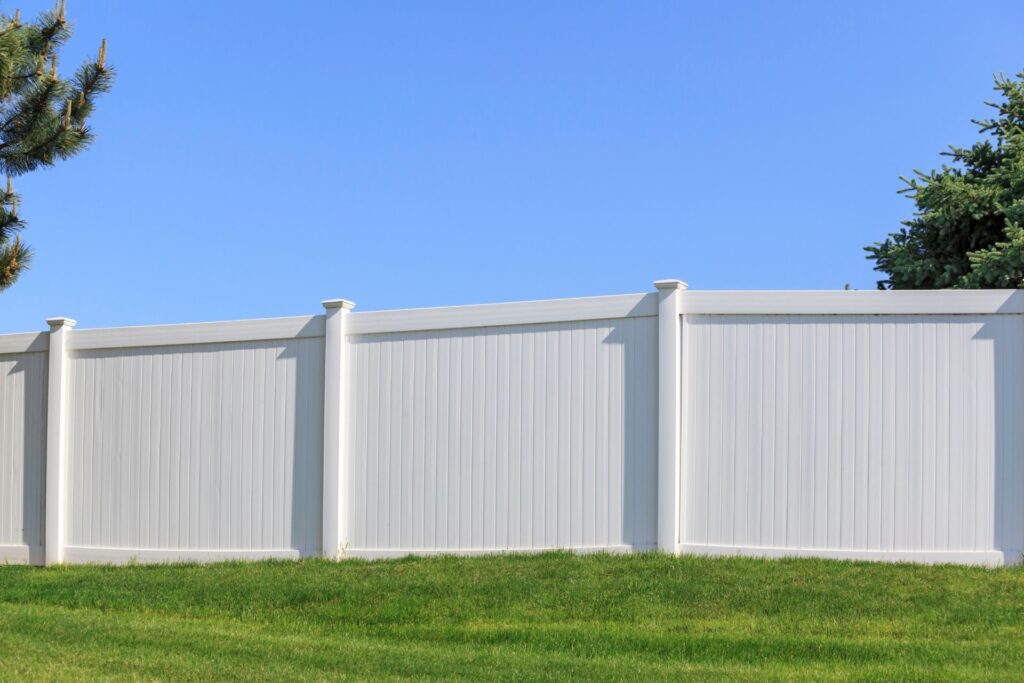Welcome to your ultimate guide on understanding the cost of decking in New Zealand! Whether you’re dreaming of a serene outdoor oasis or a vibrant space for entertaining, a well-built deck can transform your home and elevate your lifestyle. However, embarking on a decking project involves careful planning and budgeting. In this comprehensive post, we will explore the various factors that influence decking costs, including material choices, design complexity, and regional variations. We’ll also provide a detailed cost breakdown for different decking materials, share tips on how to save money, and present real-life case studies to help you make informed decisions. Get ready to uncover everything you need to know about decking costs in NZ, ensuring your project is both beautiful and budget-friendly.
On average, the cost of decking in New Zealand varies based on material choice, deck size, and design complexity. Timber decking typically ranges from NZD $170 to $250 per square meter, with Pine being more affordable and hardwoods like Kwila costing more. Composite decking costs between NZD $300 to $600 per square meter, offering long-term savings due to lower maintenance. Additional costs include site preparation, labor, permits, and finishing touches such as staining or adding railings. Careful planning and material selection can help manage and reduce overall costs.
Why Invest In Decking?
Enhanced Outdoor Living
Investing in decking transforms your outdoor space into an extension of your home, creating a perfect spot for relaxation, entertainment, and family gatherings. Picture yourself sipping coffee on a sunny morning or hosting a barbecue with friends on a warm summer evening. A well-designed deck not only provides additional living space but also allows you to fully enjoy your garden and surrounding nature. By bringing the comforts of indoor living outside, decking offers a seamless blend of functionality and pleasure, making your outdoor area a versatile haven for all seasons.
Added Property Value
A deck is more than just a luxury; it’s a smart investment that can significantly boost your home’s market value. Prospective buyers often seek homes with appealing outdoor spaces, and a deck is a highly desirable feature. It offers an excellent return on investment, often recouping a substantial portion of the cost when selling the property. According to real estate experts, homes with well-maintained decks tend to sell faster and at higher prices compared to those without. By adding a deck, you’re not just enhancing your lifestyle but also making a strategic financial decision that pays off in the long run.
Lifestyle and Aesthetics
Decking doesn’t just add functionality to your home; it also enhances its overall aesthetics and ambiance. The right deck can beautifully complement your house’s architecture, creating a harmonious and visually appealing outdoor space. Whether you prefer a sleek, modern design or a rustic, traditional look, decking materials and designs are available to suit every taste and style. Moreover, a well-crafted deck can serve as a focal point for your garden, tying together various landscape elements and elevating your property’s curb appeal. By investing in decking, you’re not only improving your home’s appearance but also creating a delightful outdoor environment that reflects your personal style and enhances your daily life.
In conclusion, investing in decking offers numerous benefits, from enhancing outdoor living and increasing property value to improving lifestyle and aesthetics. It’s a worthwhile investment that brings both immediate enjoyment and long-term rewards, making your home more attractive, functional, and valuable.
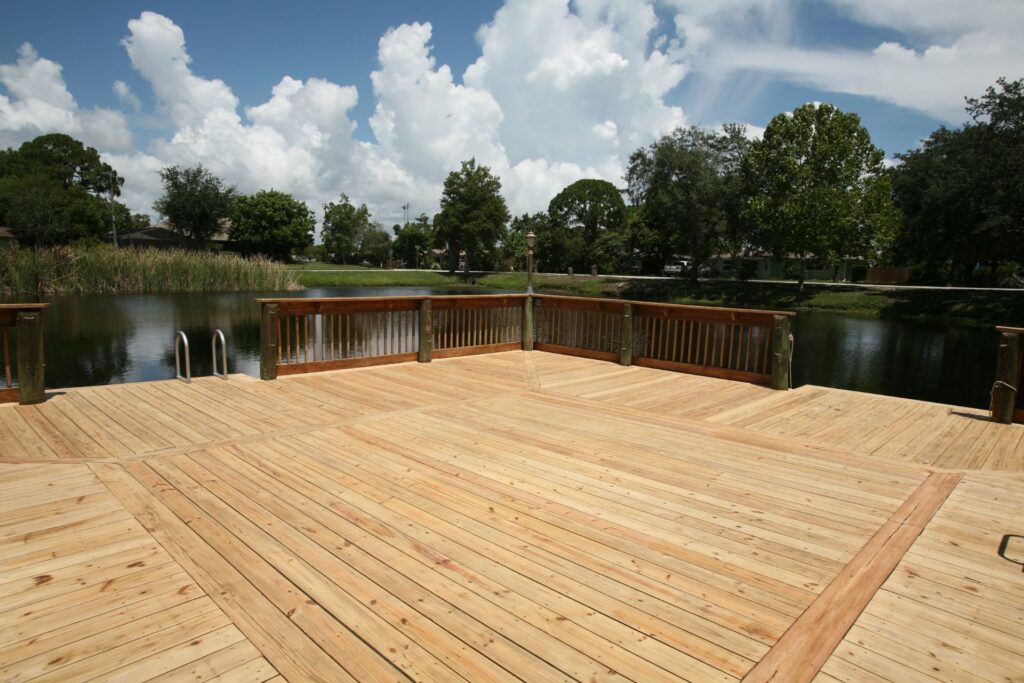
Factors Influencing The Cost Of Decking In NZ
When planning a decking project in New Zealand, several factors can influence the overall cost. Understanding these factors can help homeowners make informed decisions and budget effectively. Here’s a detailed look at the primary elements that affect decking costs in NZ.
Material Choices
The material you choose for your deck significantly impacts the total cost. Different materials come with varying price points and benefits.
Timber
- Pine: Pine is one of the most affordable and widely used decking materials in NZ. Treated pine is resistant to rot and insects, making it a durable choice. However, it requires regular maintenance to preserve its appearance and longevity.
- Kwila: Known for its rich, reddish-brown color and durability, Kwila is a popular hardwood option. It is more expensive than pine but offers greater resistance to weathering and a longer lifespan.
- Hardwood: Other hardwoods like Jarrah and Spotted Gum are also favored for their strength and aesthetic appeal. These options are typically on the higher end of the price spectrum but provide excellent durability and minimal maintenance.
Composite
- Composite decking combines wood fibers and plastic, offering a low-maintenance alternative to timber. It is resistant to rot, insects, and fading. While the initial cost is higher than pine, the reduced maintenance requirements can lead to cost savings over time.
PVC
- PVC decking is entirely synthetic, making it highly resistant to moisture, insects, and mold. It is one of the most expensive options but offers exceptional durability and minimal maintenance. PVC decking is an excellent choice for homeowners seeking a long-lasting and hassle-free deck.
Size and Design
The size and design complexity of your deck are crucial factors in determining the cost.
Deck Size
- The larger the deck, the higher the cost. This is due to the increased amount of materials and labor required. Homeowners should consider how much space they need and balance it with their budget.
Design Complexity
- Simple, single-level decks are generally more affordable. Adding design elements like multiple levels, built-in seating, or custom railings can significantly increase the cost. Each additional feature requires more materials and labor, driving up the price.
Location and Terrain
The location and terrain of your property can also influence the cost of your decking project.
Site Preparation
- Preparing the site for construction can incur additional costs. This includes leveling the ground, removing old structures, and addressing any drainage issues. Properties with uneven terrain or challenging landscapes may require more extensive preparation work.
Accessibility
- Easy access to the construction site can reduce labor costs. Conversely, if your property is difficult to reach or has limited access points, the project may require more time and effort, increasing labor expenses.
Labor Costs
Labor costs can vary significantly based on several factors.
DIY vs. Professional Installation
- Opting for a DIY approach can save on labor costs but requires time, skill, and the right tools. Professional installation ensures a high-quality finish and adherence to building standards but comes at a higher price. Homeowners should weigh the potential savings against the risk of mistakes and the value of professional expertise.
Regional Variations
- Labor costs can differ across New Zealand. Urban areas with higher living costs may have higher labor rates compared to rural regions. It’s essential to get quotes from local contractors to understand the labor costs in your area.
Permits and Regulations
Complying with local building codes and regulations is necessary for any decking project.
Building Consents
- Depending on the size and height of your deck, you may need a building consent from your local council. The cost of obtaining these permits can vary, so it’s crucial to check with your local authority.
Compliance with Local Regulations
- Ensuring your deck meets all local regulations can incur additional costs. This may include specific structural requirements, safety features, and inspections. Non-compliance can lead to fines and costly modifications, so it’s best to factor these potential costs into your budget from the outset.
Understanding these factors can help you plan and budget for your decking project in New Zealand. By considering material choices, size and design, location and terrain, labor costs, and permits and regulations, you can make informed decisions that suit your needs and financial situation.
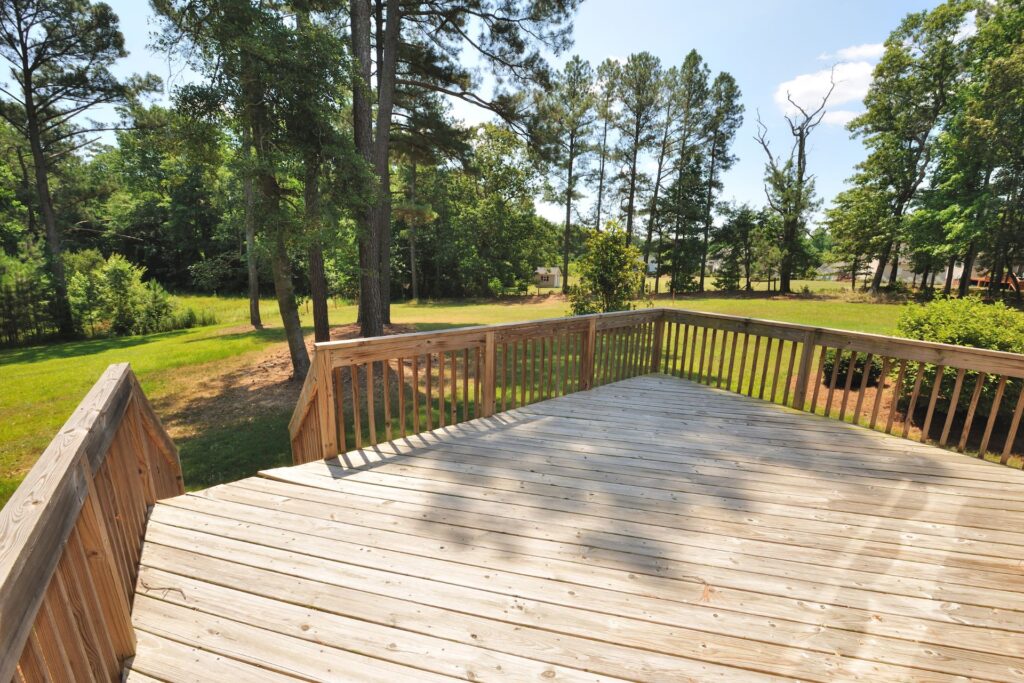
Detailed Cost Breakdown By Material
Timber Decking
Timber decking is a popular choice for many homeowners in New Zealand due to its natural beauty and versatility. Let’s explore the costs and features of different types of timber decking:
Pine
Pine is one of the most common and affordable timber options for decking in New Zealand. The average cost per square meter for pine decking ranges from NZD $50 to $80.
Pros:
- Cost-effective: Pine is the cheapest timber option, making it accessible for budget-conscious homeowners.
- Easy to work with: Pine is softwood, which makes it easier to cut and install.
Cons:
- Durability: Pine is less durable compared to other hardwoods and requires regular maintenance to prevent decay and insect infestation.
- Maintenance: Regular staining or painting is necessary to protect pine decking from weathering and to maintain its appearance.
Kwila
Kwila, also known as Merbau, is a durable hardwood that is highly resistant to decay and insect attacks. The price range for Kwila decking is between NZD $90 to $150 per square meter.
Durability:
- Kwila is known for its high durability, making it suitable for long-term use without significant wear and tear.
Maintenance:
- While Kwila requires less maintenance than pine, periodic oiling is recommended to maintain its rich color and prevent weathering.
Hardwood
Hardwoods, such as Jarrah and Spotted Gum, are premium options for decking, known for their exceptional longevity and aesthetic appeal. The cost factors for hardwood decking can range from NZD $120 to $200 per square meter.
Longevity:
- Hardwoods are incredibly durable, often lasting several decades with proper care.
Aesthetic Appeal:
- Hardwoods offer a luxurious look with rich, natural grain patterns that enhance the overall aesthetic of any outdoor space.
Composite Decking
Composite decking is an increasingly popular alternative to traditional timber due to its low maintenance and long-lasting qualities.
Cost Comparison with Timber
Initially, composite decking may have higher upfront costs compared to timber, ranging from NZD $150 to $250 per square meter. However, when considering long-term maintenance savings, composite decking often proves to be more cost-effective.
Initial Costs:
- Higher than timber but justified by longevity and low maintenance.
Long-term Maintenance Savings:
- Composite decking requires minimal upkeep, saving time and money on maintenance over the years.
Popular Brands
Several well-known composite decking brands are available in New Zealand, each offering unique features and pricing:
- Trex: Known for its durability and wide range of colors and finishes. Prices typically range from NZD $180 to $250 per square meter.
- Futurewood: Offers eco-friendly options made from recycled materials, with prices around NZD $150 to $220 per square meter.
- ModWood: A popular choice for its low maintenance and resistance to weathering, costing between NZD $160 to $230 per square meter.
PVC Decking
PVC decking is another durable and low-maintenance option, particularly favored for its longevity and resistance to moisture and insects.
Price Range
The typical costs for PVC decking range from NZD $180 to $300 per square meter.
Benefits
- Longevity: PVC decking can last up to 25 years or more without significant degradation.
- Maintenance Requirements: Requires very little maintenance compared to timber; no staining or painting is needed.
- Aesthetic Options: Available in a variety of colors and styles, PVC decking can mimic the appearance of natural wood without the associated upkeep.
By considering these detailed cost breakdowns by material, homeowners in New Zealand can make an informed decision about the best decking option that fits their budget, maintenance preferences, and aesthetic desires.
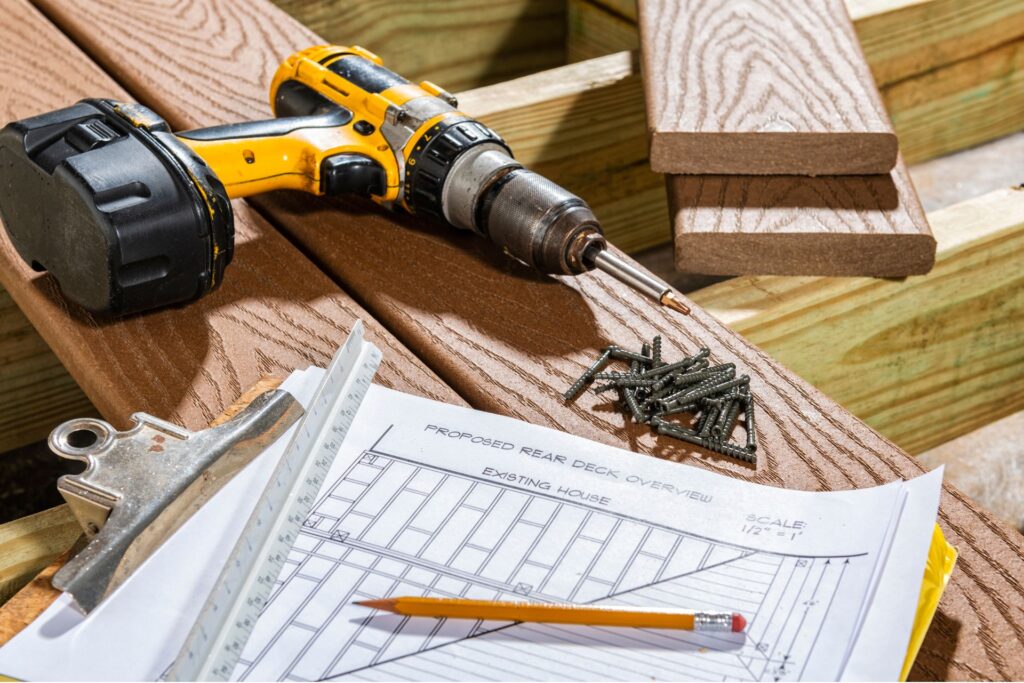
Additional Costs To Consider
When planning your decking project, it’s crucial to look beyond the surface. While the primary materials like decking boards often get the most attention, additional costs can significantly impact your overall budget. Here’s a closer look at some of these extra expenses you should account for:
Substructure
The substructure is the foundation of your deck, ensuring its stability and durability. This includes joists, bearers, and other essential structural components. Quality substructure materials are vital as they support the entire decking system. Depending on the size and design of your deck, the cost of these materials can vary. Investing in durable, treated timber or steel for your substructure can prevent issues like warping or rot, saving you money on future repairs.
Fasteners and Fixings
Fasteners and fixings are small yet essential components that hold your deck together. This category includes screws, nails, and brackets. While these items might seem insignificant, they add up quickly. High-quality fasteners are a must to ensure the longevity and safety of your deck. Cheaper alternatives might save money upfront but can lead to maintenance problems down the road. Opting for stainless steel or coated fasteners can provide resistance to rust and corrosion, particularly in outdoor settings.
Finishing Touches
Adding finishing touches to your deck can enhance its aesthetics and functionality. Here are a few aspects to consider:
Staining and Sealing
Protecting your timber deck from the elements is crucial, and this is where staining and sealing come into play. These treatments help to maintain the deck’s appearance and prolong its life by protecting against moisture, UV rays, and wear. The cost of staining and sealing varies depending on the products used and the size of your deck. Regular maintenance, typically every couple of years, is necessary to keep your deck in top condition, so consider these ongoing costs in your budget.
Deck Lighting
Incorporating lighting into your deck design can create a welcoming ambiance and improve safety during the evening. Options range from simple solar-powered lights to more elaborate wired systems. While the initial investment in deck lighting can vary, the benefits of added usability and visual appeal often justify the cost. Additionally, modern LED options are energy-efficient and have a longer lifespan, reducing long-term expenses.
Railings and Balustrades
Railings and balustrades are not only safety features but also design elements that can enhance the look of your deck. The cost of these items depends on the materials and styles chosen. From traditional timber railings to modern glass or metal options, each choice brings different aesthetics and price points. Ensure that your railings meet local safety regulations while complementing the overall design of your deck.
By considering these additional costs early in your planning, you can create a more accurate budget and avoid surprises down the line. Each of these elements contributes to the overall quality, safety, and enjoyment of your new deck, making them well worth the investment.
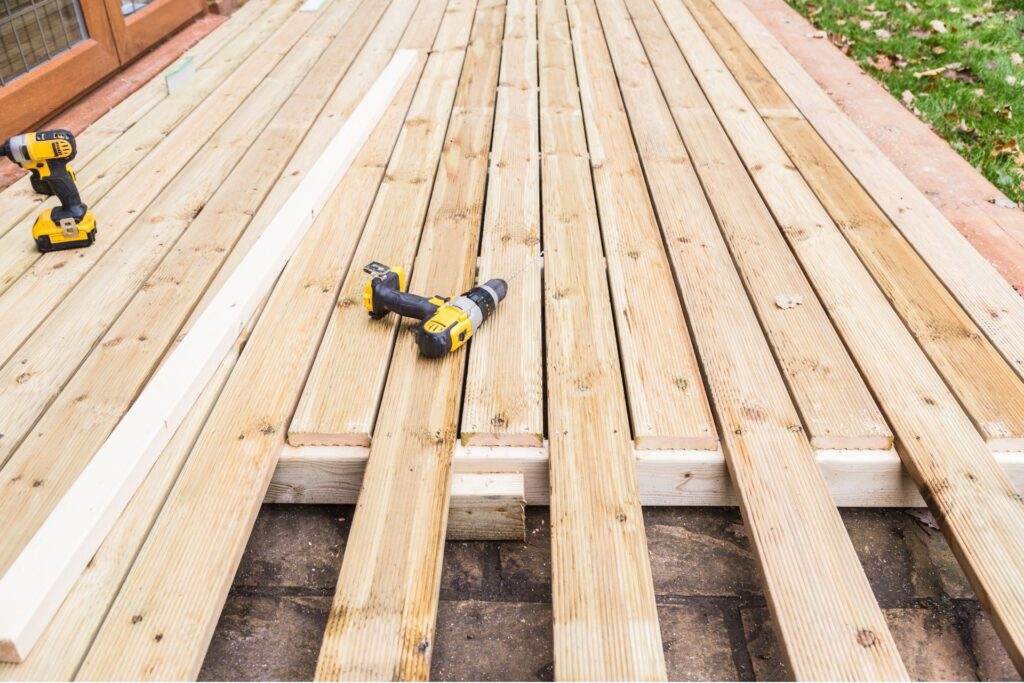
Cost-Saving Tips
When embarking on a fencing project, costs can quickly add up. However, with some strategic planning and smart choices, you can significantly reduce expenses without compromising on quality or aesthetics. Here are some practical cost-saving tips to help you manage your fencing project budget effectively:
Material Selection: Choosing Cost-Effective Yet Durable Materials
One of the most impactful ways to save on your fencing project is by carefully selecting your materials. While high-end materials like wrought iron or premium wood offer great durability and aesthetics, they come with a hefty price tag. Instead, consider cost-effective yet durable alternatives such as treated pine, vinyl, or composite materials. These options provide a balance of longevity, low maintenance, and aesthetic appeal at a fraction of the cost of more expensive materials. Additionally, sourcing materials locally can reduce shipping costs and support your local economy.
Off-Season Discounts: Timing Your Project for Potential Savings
Timing can play a crucial role in the overall cost of your fencing project. Contractors and suppliers often have busy and slow seasons. Scheduling your project during the off-season can lead to significant savings as contractors may offer discounts to keep their business steady year-round. Typically, the off-season for outdoor projects is during late fall or early winter. By planning ahead and booking your project for these quieter months, you can take advantage of reduced labor rates and potential material discounts, stretching your budget further.
Simplifying Design: Keeping the Design Straightforward to Minimize Costs
Complex designs and custom features can significantly drive up the cost of a fencing project. To keep expenses in check, consider opting for a simpler, more straightforward design. Straight lines and fewer decorative elements not only reduce material and labor costs but also make the installation process quicker and easier. A minimalist design can still be highly functional and visually appealing. Consult with your contractor to find a balance between aesthetics and simplicity that fits within your budget.
DIY Elements: Tasks That Homeowners Can Handle Themselves to Reduce Labor Costs
Labor is a significant component of fencing project costs. By taking on some of the work yourself, you can save a considerable amount of money. For example, tasks such as clearing the site, digging post holes, or painting the fence can be done by homeowners with basic tools and a little effort. Even if you’re not comfortable with more complex tasks like setting posts or installing panels, doing the prep and finishing work yourself can lead to substantial savings. Just ensure that you have the necessary skills and tools to complete the tasks safely and effectively.
By making thoughtful choices regarding materials, timing, design, and DIY opportunities, you can significantly reduce the costs of your fencing project. These cost-saving tips not only help you stay within budget but also allow you to achieve a beautiful and durable fence that enhances your property without breaking the bank. Remember, a little planning and effort can go a long way in ensuring a successful and economical fencing project.

Real-Life Case Studies
Case Study 1: Breakdown of Costs for a Small Timber Deck in Auckland
In Auckland, a homeowner named Sarah decided to add a small timber deck to her backyard to create a cozy outdoor space for family gatherings. The deck was planned to be 20 square meters, made of high-quality pine timber, and equipped with basic railing and steps.
Materials and Labor Costs
- Pine Timber: The cost for pine timber was approximately $120 per square meter, amounting to $2,400.
- Railings and Steps: Basic railings and steps added another $800.
- Labor: Professional installation by a reputable decking company cost $1,500.
- Permits and Miscellaneous: The permit for the deck and other miscellaneous costs totaled $300.
Total Cost: The overall cost for Sarah’s small timber deck in Auckland came to $5,000. Sarah was thrilled with the outcome, as the deck significantly enhanced her outdoor living space without breaking the bank.
Case Study 2: Detailed Costs of a Composite Deck Project in Wellington
In Wellington, Mark and Jenny opted for a composite deck to take advantage of its low maintenance and durability. They planned a 30-square-meter deck with a modern design, incorporating high-end composite materials.
Materials and Labor Costs
- Composite Decking: The cost for composite decking was $200 per square meter, totaling $6,000.
- Enhanced Design Elements: Additional features like built-in seating and lighting added $1,200.
- Labor: Skilled labor for the installation was $2,500.
- Permits and Miscellaneous: The cost of permits and other miscellaneous expenses amounted to $500.
Total Cost: Mark and Jenny’s composite deck project in Wellington came to a total of $10,200. The couple was extremely satisfied with the investment, as their new deck required minimal upkeep and offered a sleek, contemporary look.
Case Study 3: Cost Analysis of a Large, Multi-Level Deck in Christchurch
In Christchurch, a family decided to build a large, multi-level deck to maximize their outdoor entertainment area. The project involved a 50-square-meter deck with different levels, intricate design, and premium timber.
Materials and Labor Costs
- Premium Timber: The cost for premium timber, such as Kwila, was $180 per square meter, totaling $9,000.
- Multi-Level Structure: The complex design with multiple levels added $2,500.
- Labor: The labor cost for this intricate project was $4,500.
- Permits and Miscellaneous: Permits and other costs were $700.
Total Cost: The cost analysis for this large, multi-level deck in Christchurch reached $16,700. The family found the investment worthwhile as it dramatically improved their outdoor space, making it perfect for large gatherings and special occasions.
These real-life case studies highlight the varying costs associated with different types of decking projects across New Zealand. Whether it’s a small timber deck in Auckland, a composite deck in Wellington, or a multi-level timber deck in Christchurch, each project comes with its unique set of expenses and benefits. Homeowners can use these examples as a guide to estimate their own decking project costs and plan accordingly.
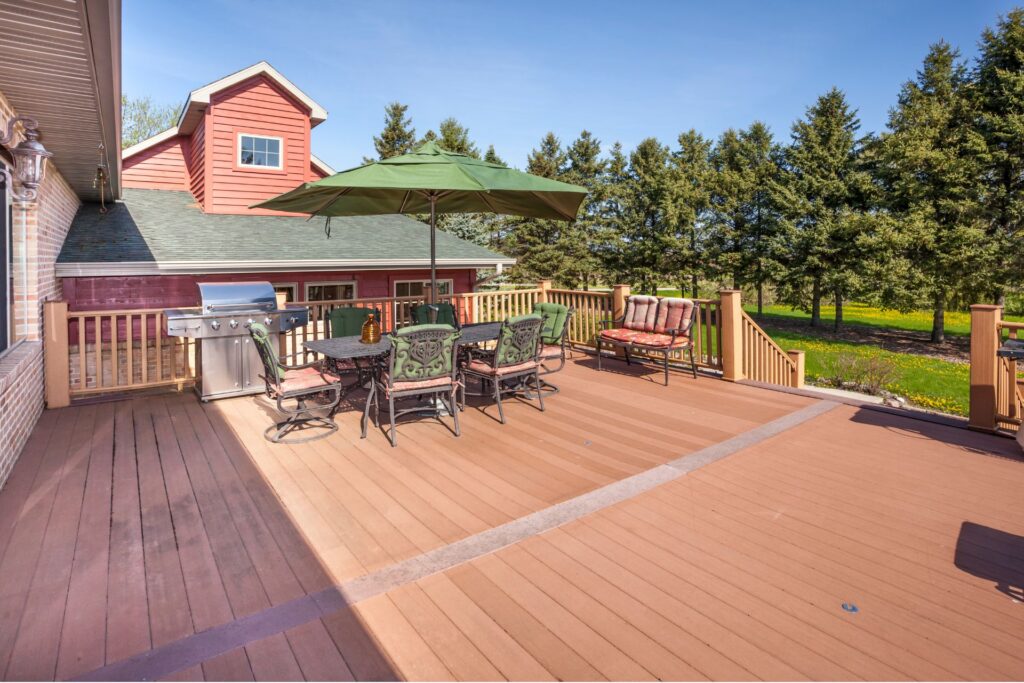
FAQs: About Cost Of Decking NZ
Conclusion
In conclusion, this post has comprehensively covered the various aspects of decking in New Zealand, from understanding the different types of decking materials available to the costs involved and factors influencing these costs. As you embark on your decking project, it is crucial to meticulously plan every step to ensure you stay within your budget while achieving your desired results. Remember, a well-planned project not only saves money but also ensures a durable and aesthetically pleasing deck. We encourage you to share your decking experiences, ask any questions you might have, or reach out for a consultation to help make your decking project a success.
About the Author:
Mike Veail is a recognized digital marketing expert with over 6 years of experience in helping tradespeople and small businesses thrive online. A former quantity surveyor, Mike combines deep industry knowledge with hands-on expertise in SEO and Google Ads. His marketing strategies are tailored to the specific needs of the trades sector, helping businesses increase visibility and generate more leads through proven, ethical methods.
Mike has successfully partnered with numerous companies, establishing a track record of delivering measurable results. His work has been featured across various platforms that showcase his expertise in lead generation and online marketing for the trades sector.
Learn more about Mike's experience and services at https://theleadguy.online or follow him on social media:

